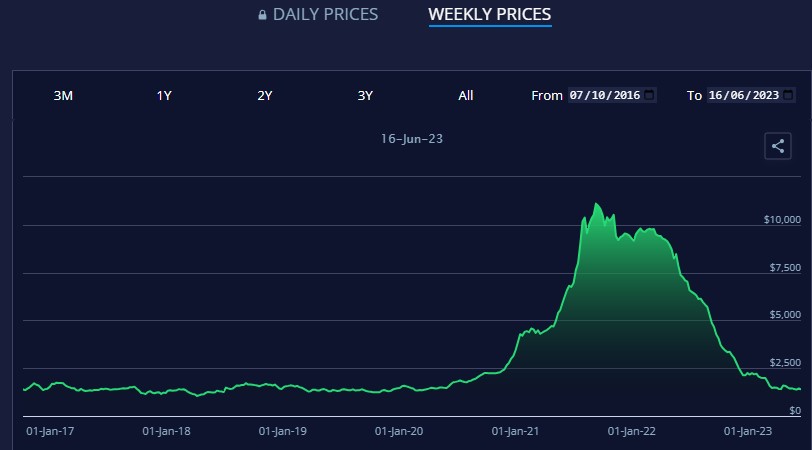Container freight prices have come back to their pre-Covid levels.

The ocean freight industry faced a capacity crunch during the pandemic, which led to increased uncertainties and created a favorable environment for shipbuilding markets. To address the shortage, players in the container shipping sector started ordering more container ships than ever before. Despite declining spot rates and reduced consumer spending due to a looming recession, carriers are still placing orders for new ships.
Ocean carriers are fiercely competing to expand their capacity by acquiring larger and more efficient vessels. According to Alphaliner, 89 new mainline ships will be delivered in the coming months of 2023, followed by 130 ships in 2024 and 96 ships in 2023. In total, around 315 vessels for mainline and non-mainline trades will be delivered over the next three years. MSC, the largest ocean carrier, will acquire the highest number of mainline vessels, while CMA CGM follows closely in terms of orders. Notably, these new vessels are designed to be green fuel compatible. Maersk has ordered six 17,000 TEU (Twenty-foot Equivalent Unit) ships that can run on both fossil fuel and green methanol, expanding their fleet of green fuel vessels. MSC has ordered 12 16,000 TEU ships that can run on LNG, while COSCO is ordering 6 methanol-powered 23,000 TEU ships along with nine 15,000 TEU ships running on conventional fuel.
Overcapacity is a significant concern for carriers in the ocean freight industry as they face an influx of new vessels. Experts predict that the volume of ordered capacity will far exceed global demand. This surplus of space is expected to lead to intense competition among carriers, potentially causing declining rates and impacting their profitability. The net increase in capacity from new vessel orders is estimated to be around 30%. To mitigate this issue, carriers may implement blank sailings (“blank sailing” refers to the cancellation of a scheduled voyage or sailing of a vessel on a specific route) to moderate capacity. However, this situation presents an opportunity for freight forwarding companies to thrive, benefiting from low freight rates and attracting more volume, making this year profitable for them.
We have seen a strong move from RORO shipping to containerized car shipping out of Japan. Traditionally used car RORO exporting was on the spare space made available on RORO ships exporting new cars out of Japan. Now even the car makers in Japan are looking to export new cars in containers due to the lack of new RORO shipping coming online.
This shift and trend to container shipping of used vehicles out of Japan will certainly continue in the immediate and perhaps long term future.
YES, we purchase cars from the Japanese auctions and YES we arrange container export out of Japan. Join us!